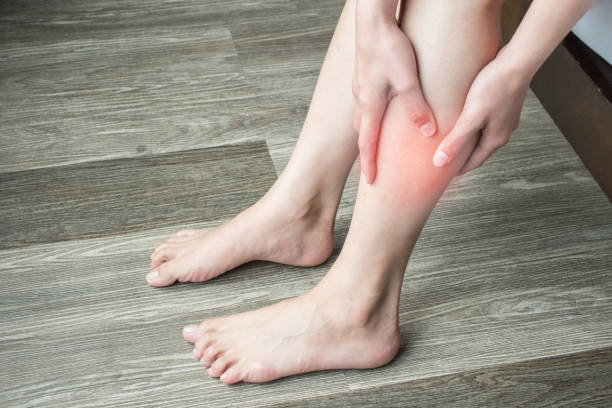
Did you know that varicose veins could be a sign of a very serious health risk? While varicose veins already have their own inherent risks if left untreated, they also could be a harbinger of life-threatening blood clots and deep vein thrombosis (DVT). At Central Florida Vein & Vascular Center, we want to be sure you know the risks and your options for care and treatment.
When patients experience deep vein thrombosis (DVT) and pulmonary embolism (PE), they are at risk of venous thromboembolism (VTE). Deep vein thrombosis is the medical term for a blood clot, found in the deep veins of the leg. Pulmonary embolism happens when these blood clots loosen and travel upward toward the lungs, resulting in VTE.
VTE is a dangerous and sudden pulmonary embolism and should be treated with immediate and professional care.
Varicose veins can cause many symptoms: including leg heaviness or fatigue. When these varicose veins in the leg exhibit certain symptoms (that is, they become inflamed and painful), it’s a condition medical professionals call superficial phlebitis. And, in some cases, superficial vein thrombosis (SVT) occurs alongside superficial phlebitis. In a recent study published in the medical journal Archives of Dermatology, researchers found out that a whopping one in four patients with SVT also has DVT, a serious condition in which a blood clot (or thrombus) forms in a deep vein, typically in the leg. If the clot breaks off and ends up in the lungs, it can block an artery and cause a pulmonary embolism, a condition which causes 50,000 to 200,000 deaths each year in the United States. And the scary part is that DVT can exist with no discernible symptoms. But sometimes, DVT causes swelling, warming, a change skin color, or pain/tenderness in the affected leg.
And while it’s not exactly good news, the silver lining of this gray cloud is that there are symptoms indicating a pulmonary embolism has formed, including unexplained sudden shortness of breath, chest pain when coughing or taking a deep breath, lightheadedness, a rapid pulse, and coughing up blood.
Most patients report a prolonged muscle cramp in the legs, also known as a charley horse. Leg swelling or discoloration may follow. If the blood clot travels toward your lungs, you may experience DVT pulmonary embolism symptoms such as:
Many of these warning signs are similar to anxiety symptoms, so some physicians easily misdiagnose VTE.
DVT and pulmonary embolism treatment depend on your individual needs and the severity of your case. Some mild cases can be treated with anticoagulation or using blood thinners to control the clot. Some physicians may recommend a thrombolytic medication to dissolve the blood clot internally. Our vascular surgeons will evaluate your case to determine the proper treatment.
Medical care is a vital step to address your immediate recovery needs. Once you’ve treated your VTE, it’s crucial to prevent future issues with lifestyle changes. The chances for pulmonary embolism increase as you age, so here are a few ways to monitor and protect your vein and vascular health:
The best way to avoid DVT and pulmonary embolism is by minimizing and preventing blood clots.
The first step in all this, though, is to have a vein specialist evaluate your risk and, if you have varicose veins, explain your treatment options and provide the appropriate care for your condition. Remember, varicose veins are not merely a cosmetic annoyance. They are a serious medical condition that can lead to dangerous health problems. Varicose veins can put you at risk for SVT, and down the road SVT can mean DVT or post-thrombotic syndrome (a condition in which the patient experiences chronic pain, swelling, redness and sores).
Contact Central Florida Vein and Vascular Center today to set up a consultative appointment with our vascular physician in Orlando, Dr. Horowitz, about how we can help treat your varicose veins.